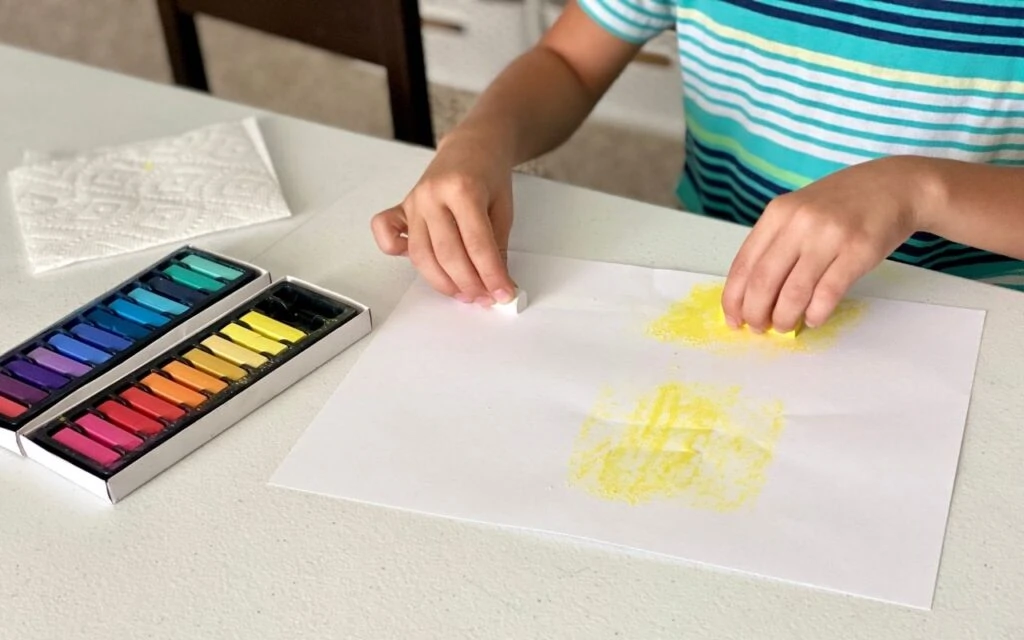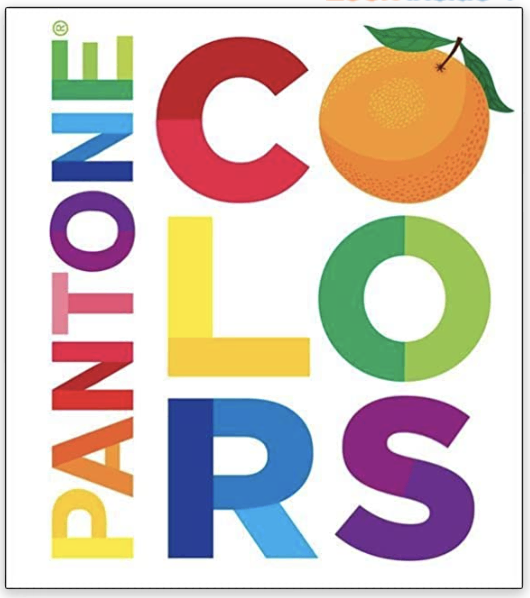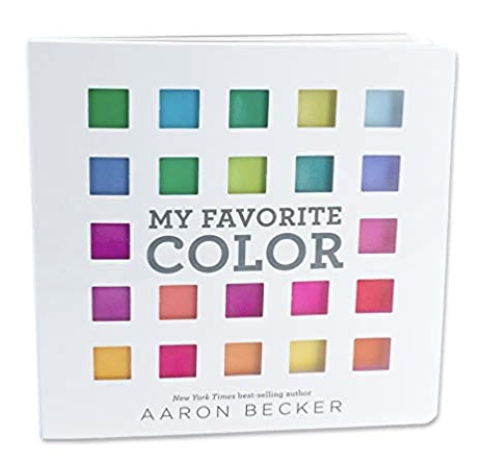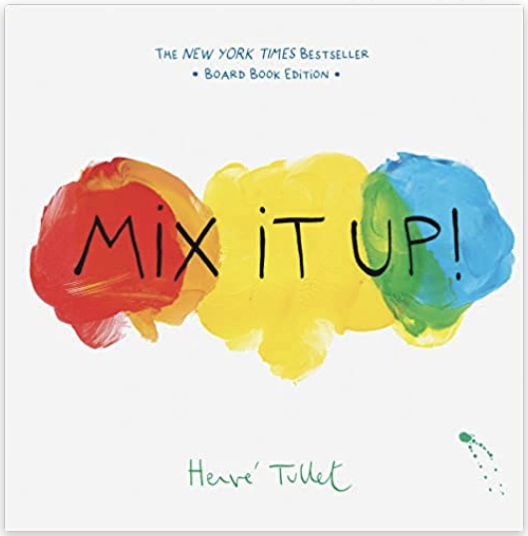Did you know that we can see millions of distinct colors but cannot name each of them? Human language categorizes colors into a small set of words – eleven to be exact.
But if you go to the paint aisle of a hardware store you will quickly see that paint companies have many unique names for their different color selections. Just like paint companies, through this Play Invitation children can create their own names for colors. This can support them to develop language and literacy as well as building associations and attribution of meaning.
What Could Lead Us to This Play Invitation
- Children have been curious about names and where they come from;
- Children are excited about exploring colors and color mixing;
- Children have been creating stories.
Materials Needed
- Soft pastels
- Paper or cardboard pieces
- Water and a brush
- Optional: Paper towel
Setting up This Play Invitation
- Place the paper on a table or tray.
- Add the pastels.
- Prepare a pot of water and brushes.
Tips: Demonstrate how to use a folded piece of paper towel under their drawing hand to prevent smearing the drawing.
How to Create the Drawing
- Invite children to use the soft pastels to create patches of color on the paper, and observe how well soft pastels can fill the paper with areas of color. Children can either use the tips of the soft pastels, or turn them on their side. Let them mix the colors.
- Bring the pot of water and a brush, and let the children discover what happens next! How will the colors blend?
- Once the color patches have been created, ask the children what they want to name the colors. You can share paint swatches from the hardware store to show how others have made up their own names for colors.

TIP: Soft pastels can break easily. If a child has not developed tactile perception, they might break the pastel if they bear the same weight as they would with a marker or crayon. No worries! Soft pastels are just as great on their sides.
How to Nurture the Natural Unfolding of the Child’s Identity During This Play Invitation
- Children have the right to work with materials that are not from toy stores. With creativity, educators can find many materials and ideas outside the world of toys and so-called school materials.
- Children have the right to create something new. By giving children the opportunity to name colors, we invite them to think about where the names come from, and to engage in the creative and authorial process.
The Academic Learning Opportunities
- LANGUAGE: Use language to express ideas and create new associations of words.
- ART: Explore materials and create new colors.
Extensions
Continue to explore the origin of names – and investigate, for example, plants and animals you have in your school. Or you can invite children to invent an animal (by drawing or puppetry) and give it a name and identity.
Book Recommendation

This must have book that shares 9 basic colors and 20 shades of each one. I recommend the board book version so it can easily be used in the art center without worry of damage!

This gorgeous board book shares incredible ever-changing colors, offering a spectrum of hues. Board books are perfect for the art center as they are easy to wipe off.

Celebrates the magic of imagination of three simple colors transforming into an entire rainbow of possibilities.


